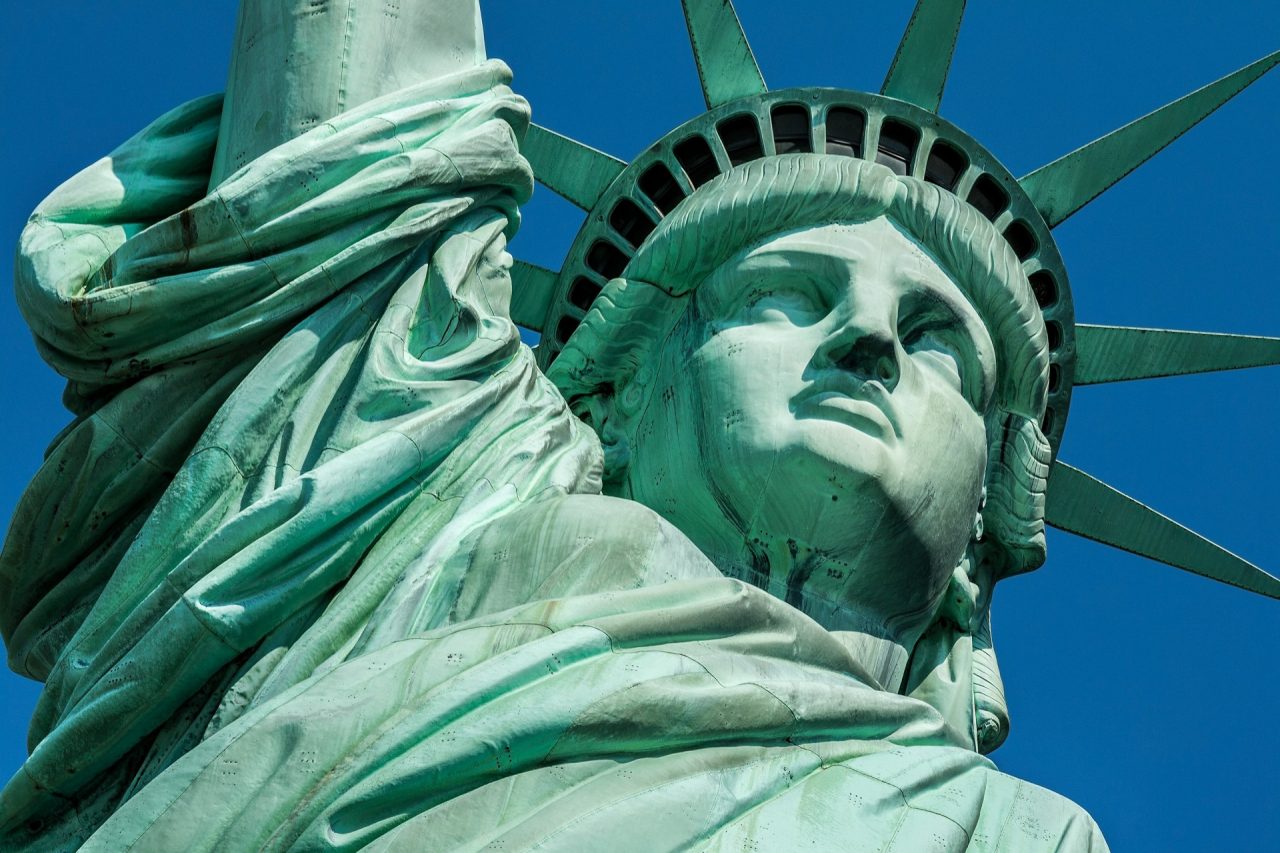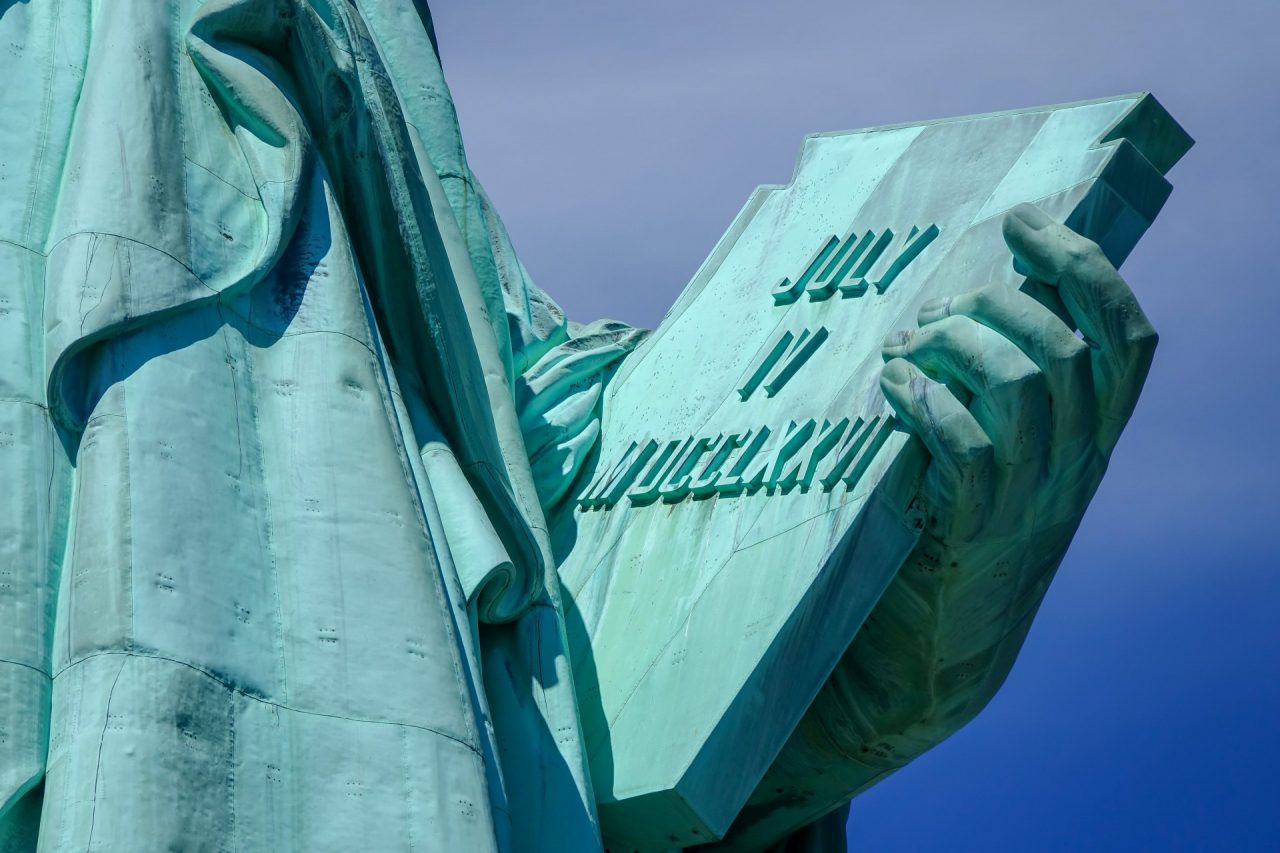When people think of the Statue of Liberty, they think of a lady dressed in a gray tunic, looking out towards the ocean with a steely gaze. Very few people are aware, however, that beneath her robes lies the secret of the iconic statue that has marked the gateway to the United States of America for millions of immigrants arriving by sea.
In fact, the Statue of Liberty is supported by an iron lattice structure, covered with 300 sheets of copper shaped and riveted together – this invisible internal suit of armour supports this imposing monument standing 93 meters high (305 feet) and strong winds.
This innovative support structure was designed by Gustave Eiffel, the French architect who later designed the famous tower in Paris that bears his name.
Eiffel wanted the structure to be flexible enough to give the monument the elasticity to withstand the strong ocean gusts. So inside the statue he built an iron truss tower – the first, invisible suit of armour. It was attached to a second suit of armor (the statue’s exterior) by iron bars ending in metal ribbons that were welded onto the external copper. In this phase of the statue’s construction, workers took centre stage, because each metal ribbon had to be fixed manually to the other. Eiffel’s technique was an early version of the “curtain wall,” was later adopted by many of the early skyscrapers in the last part of the 19th century.
Assembling the Statue of Liberty
Eiffel’s idea fitted perfectly with the vision of Frédéric Auguste Bartholdi, the sculptor and painter – also French – who designed the Statue of Liberty. The creation of a flexible but at the same time very solid skeleton allowed Bartholdi to have the statue built in France. It was built in pieces. The hand grasping the torch was completed in 1876 and exhibited at the Centennial Exposition in Philadelphia; the head was finished in 1878 and put on display at the Paris World’s Fair, while the entire statue was built between 1881 and 1884.
Once finished, the structure was disassembled, sent by ship and reassembled on Bedloe’s Island, which today is called Liberty Island. It took 215 boxes and numerous trips before the ship Isère completed the transport.
Once it arrived in the United States, the huge statue was assembled piece by piece following Eiffel’s design for the support structure, so that each piece of the cladding would fit perfectly with its invisible skeleton.
The first stone on the pedestal was laid on August 5, 1884 and the work was completed in 1885 and inaugurated on October 28, 1886, on a wet and rainy day, in front of the admiring gaze of an estimated one million New Yorkers.

The gift of France to the United States of America
Once completed, the Statue of Liberty instantly dominated New York Bay. Thanks to its impressive height of 93 meters (305 feet), the Statue is visible from up to 40 kilometres (24 miles) away – becoming the first thing people see when they arrive in the United States by sea. Inspired by the Roman goddess of freedom, Libertas, the lady holds a torch in one hand (a symbol of the eternal fire of freedom) and in the other a book bearing the date of July 4, 1776, American Independence Day.
France donated the statue to the United States as a sign of friendship and to commemorate the Declaration of Independence, which had taken place a century earlier.
The construction of the massive pedestal was financed in America, but given the lack of the necessary funds, the New York World newspaper launched a fundraiser and managed to raise $100,000 from readers and thereby completed the job.

The Statue reopens its doors
Visiting the Statue of Liberty is not always so easy. The monument has been opened and closed several times over the years. The first time it was closed to the public dates back to 1984, when the statue was restored before its centennial celebration. The torch was replaced with a new one, and the old one – after a restoration – was placed at the entrance of the base.
The state was closed a second time immediately after the terrorist attacks of September 11, 2001. Access to the pedestal was re-opened in 2004 by President George W. Bush, while total access to the state was announced by President Barack Obama on May 17, 2009, albeit with limited and programmed entrances.
Whether open or closed, the Statue of Liberty has remained a universal monument and symbol since the day it was built. It was declared a World Heritage Site by UNESCO in 1984. But beyond its beauty and meaning, the goddess who dominates the New York Bay is also an engineering work like few others in the world, paving the way for the skyscrapers that later dotted the city.

